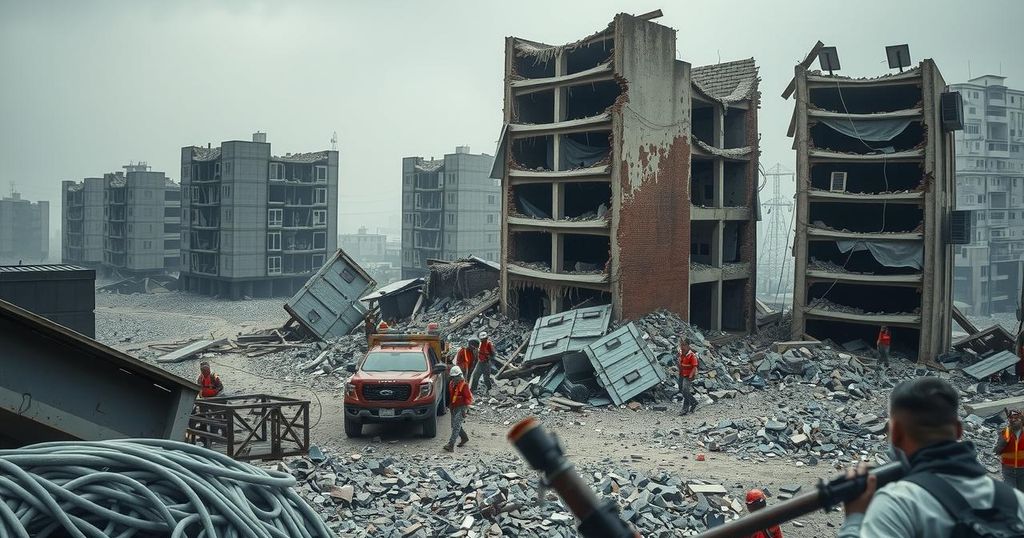Myanmar Earthquake Death Toll Expected to Exceed 3,000 as Humanitarian Crisis Escalates
A powerful earthquake in Myanmar has led to a predicted death toll exceeding 3,000, worsening a humanitarian crisis tied to civil conflict. With essential needs unmet and rescue operations struggling, responses from international aid organizations are crucial as the situation develops.
In the wake of a devastating earthquake in Myanmar, officials have reported that the death toll is expected to surpass 3,000, exacerbating an already dire humanitarian crisis exacerbated by civil conflict. The military junta leader General Min Aung Hlaing stated on state television that more than 2,000 individuals had perished and at least 441 people remain unaccounted for following the 7.7 magnitude earthquake that struck on March 29, 2025.
Rescue operations continue, albeit with dwindling hopes of survival. Marcoluigi Corsi, the U.N. Humanitarian Coordinator, highlighted the urgent need for shelter, clean water, and medical supplies. He warned that “the time window for critical search and rescue is narrowing” as affected regions face a shortage of basic necessities, leaving many residents to spend nights without electricity or running water.
The World Health Organization reported that over 10,000 structures were either collapsed or heavily damaged, impacting both Myanmar and neighboring Thailand. In Thailand, a construction site collapse yielded a death toll of 20, with multiple injuries, raising concerns over potential design flaws
In Myanmar, a poignant moment of silence for the deceased occurred during a brief pause in rescue efforts. Noteworthy rescues include that of a 63-year-old woman, extracted from the debris nearly four days post-earthquake, and a group of four individuals rescued by a Chinese team from a collapsed apartment complex.
International aid teams from nations such as Russia, China, and India have arrived, though assistance remains slow due to inadequate machinery in many locations. Humanitarian agencies emphasize the immediate need for clean water to avert disease outbreaks, particularly cholera, in communities already vulnerable to medical inadequacies.
Prior to the earthquake, more than 3 million people were displaced by ongoing civil conflict, with nearly 20 million requiring aid. Despite the escalation of military attacks post-disaster, the National Unity Government has declared a ceasefire and urged the international community to ensure direct humanitarian delivery to impacted populations, warning against military obstruction.
The military government has promised to accept international aid, yet the historical reluctance to facilitate assistance raises concerns about potential impediments to relief efforts. As humanitarian needs escalate, the focus must shift to preserving lives amidst ongoing violence.
The recent earthquake in Myanmar presents a harrowing situation as the predicted death toll climbs beyond 3,000 amidst ongoing humanitarian crises from civil conflict. Rescue operations are urgent, yet challenges remain due to infrastructural damage and shortages of basic necessities. The international community is called upon to intervene, ensuring that humanitarian aid reaches those impacted, particularly as the potential for disease outbreaks looms. Vigilance against military interference in aid distribution is crucial to save lives.
Original Source: www.news9.com




Post Comment